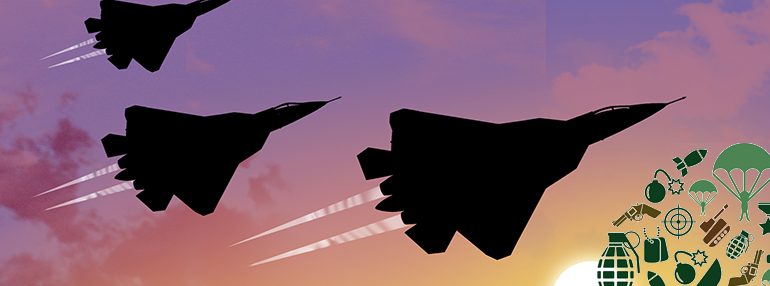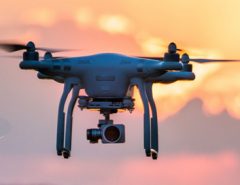The Union Budget 2024-25 marks a pivotal moment for India’s Defence and Drone Technology sectors. By strategically channelling funds and setting ambitious goals, this budget addresses critical national security needs and infrastructure challenges while opening substantial opportunities for technological advancement and industrial growth.
Recent years have seen a progressive increase in the Indian government’s investment in defence and technology. This year’s budget builds on that momentum. The 2023-24 budget set the stage with significant investments, but the 2024-25 budget advances these efforts with a dedicated approach to modernising the defence sector in India.
Strategic Funding and Allocation
The Union Budget for 2024-25 clearly prioritises national security and infrastructure. Out of the total allocation of ₹6.21 lakh crores (13 per cent of total central government expenditure) to the Ministry of Defence, ₹1.72 lakh crores (27.66 per cent) is dedicated to capital expenditure. This substantial funding is poised to accelerate modernisation efforts.
The budget also emphasises infrastructure development. The Ministry of Road Transport & Highways and the Ministry of Railways receive robust allocations to support the construction of 50,000 km of high-speed access control highways and the introduction of high-speed trains. This infrastructure boost enhances connectivity and creates a favourable environment for technological advancements, including sophisticated drone applications. Advanced UAV technology can conduct high-resolution aerial surveys, collect geospatial data, and provide real-time project oversight, optimising resource allocation and significantly enhancing overall project efficiency.
Impact on the Drone Technology Sector
Hon’ble Prime Minister’s vision of making India the global drone hub by 2030 is set to benefit from the budget’s strategic priorities. Increased funding for defence creates opportunities for the drone industry, with a growing need for advanced surveillance, reconnaissance, and tactical operations technologies. Collaboration with defence agencies and focusing on innovation will be essential for maximising these opportunities.
Additionally, the budget’s allocation of ₹2.66 lakh crore for rural development, including infrastructure improvements, is expected to boost demand for drones in remote areas. Drones can play a crucial role in enhancing agricultural practices, improving security and governance, and facilitating deliveries to remote areas. They align with the government’s rural revitalisation goals and open new avenues for growth in the drone sector.
Infrastructure and Technological Integration
The budget’s emphasis on infrastructure development complements the growing role of drones. For the National Highways Authority of India (NHAI), funding remains steady at ₹1.68 lakh crore, with an unchanged overall outlay of ₹2.78 lakh crore for the highways sector. The NHAI has mandated the integration of UAVs for high-resolution video recording and geospatial data acquisition across all phases of National Highway projects. This includes advanced applications such as photogrammetric analysis, real-time monitoring, and Geographic Information Systems (GIS) for spatial analysis, significantly enhancing the efficiency and accuracy of infrastructure projects.
Indian Railways is also leveraging UAV technology to modernise its operations. UAVs are used for comprehensive track inspections, identifying defects and irregularities with high precision, and monitoring critical infrastructure. They assist in detailed inspections of bridges, tunnels, and other structures using photogrammetry and thermal imaging to detect structural anomalies. Drones facilitate land surveys and mapping for new railway projects and support GIS for route planning and environmental impact assessments. Additionally, UAVs help accident response teams (ART) by providing rapid assessment and real-time surveillance of accident sites, enhancing situational awareness and supporting rescue operations. They also enhance security by monitoring railway yards and storage facilities, preventing theft and pilferage through real-time surveillance.
Empowering Rural India: The Namo Drone Didi Initiative
One of the standout developments in the budget is the Namo Drone Didi initiative. With an allocation of ₹500 crore, this program aims to equip 15,000 selected women self-help groups (SHGs) with drones for agricultural rental services. This initiative empowers women and integrates drones into rural agriculture, boosting efficiency and productivity. It represents a major boost for domestic drone manufacturers and highlights the potential of drones to drive innovation and improve livelihoods in rural areas.
Opportunities and Challenges
While the increase in defence funding, infrastructure, and rural development initiatives presents significant opportunities for the drone industry, it eagerly awaits an enhanced PLI scheme and an upfront R&D fund to promote innovation.
Looking Ahead: A Vision for Growth
The Union Budget 2024-25 sets a clear direction for the key sectors. With increased funding for defence, infrastructure, and rural development, the stage is set for transformative growth and innovation. To boost the sector, the industry is looking forward to an enhanced PLI scheme and an upfront R&D fund to promote indigenisation with high-value additions in India.
The focus on empowering women with advanced technology underscores the government’s commitment to building a robust, self-reliant, inclusive technology landscape. As the drone industry navigates these developments, collaboration with government agencies to make drones an integral part of our country’s security and governance infrastructure will be crucial for unlocking this sector’s full potential. Aligning fiscal priorities with this strategic sector’s needs can offer a promising future for the drone industry, potentially driving significant advancements and contributing to national growth.
In conclusion, the budget is a good step in the direction of addressing both immediate needs and long-term development goals. Leveraging of advanced technologies like drones by the government and public agencies to drive these goals would be crucial in shaping India’s drone future.
The author is Co-Chair, FICCI Drones Committee & CoFounder & CEO – ideaForg





